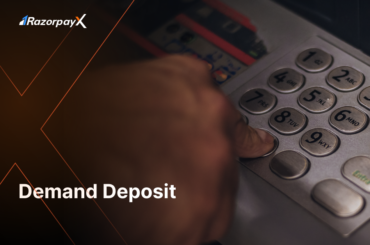An automated payment system allows users or businesses to transfer money without any manual processing. It is an electronic system that helps process the transactions within no time. Automated payment systems help streamline the accounts payable of a business. Payment automation ensures that B2B payments are carried out fast and accurately.
Table of Contents
Types of Automated Payment Systems
Automated payment systems work in multiple ways catering to different types of transactions. Listed below are different types of automated payment systems that are generally used:
Electronic Fund Transfer
It allows users to transfer money digitally through bank transfers, electronic cheques, or direct debits.
Online payment services
It allows users to send or receive money online. This form of automated payment system is typically used by individuals for personal transactions.
Bulk payments
When there is a need to make many payments at the same time, tools like RazorpayX Business Banking+ allow account holders to automate up to 50,000 payouts at once. This reduces manual labour, potential errors and makes the process almost instant.
API payouts
An API is an interface that allows for communicate between two or more software. API payments, or payouts, enable businesses to automate payment processes by integrating payment systems directly into their platform. This allows for seamless transactions without the need for manual intervention.
RazorpayX’s API Payout system makes use of world-class technology to make API payouts seamless for businesses.
Demo RazorpayX Payouts for Free
Automated Clearing House
Popularly known as ACH, handles bulk transactions. It may include vendor payments and payroll. In India, the National Automated Clearing House (NACH) is implemented by the National Payments Corporation of India (NPCI).
Benefits of Automated Payment Systems
The benefits of using an automated payment or payout system can be enjoyed by both the business and the supplier equally. From improved vendor relationships to enhanced security of payments, the system offers a range of benefits.
Saves Time and Effort
Faster processing of payments results in saving time and effort. In manually processing the payments, a business faces multiple bottlenecks. The slowdown in payment can be improved with an automated payment system.
Less Human Errors
With manual processing, the probability of human error increases. The implementation of an automated payment system eliminates the chances of errors that may happen due to manual or human intervention in the process.
Enhanced Security
Automated payment systems offer advanced security features that protect the business from financial fraud and threats. It may include multi-factor authentication, encryption, and suspicious detection systems.
Business Continuity
It allows businesses to have better and improved insights into the financial data. It can help them to assess the data and improve their efficiency.
Challenges of Using an Automated Payment System
Using an automated payment system comes with its own set of challenges. Listed below are a few challenges that a business may face while implementing an automated payment system:
System Integration
Transitioning into a new system is always difficult. Integrating the automated payment systems can be a complex process. It requires precise planning and skilled IT support that can handle the changes in the existing workflows.
RazorpayX Business Banking+ comes with RazorpayX Docs, carefully curated documentation designed to simplify automated payments even for non-technical users.
User Acceptance
Employees who will use the system have to be fully trained. Extensive training with clear workflows of the system is necessary for 100% adoption of the system.
Operational Disruptions
It may disrupt normal business operations for a few days. To minimise the downtime, ensuring that the payment system remains functional is essential.
How to Set up Automated B2B Payments?
Make sure your automated payment system complies with your company’s operational requirements, security specifications, and any applicable financial legislation.
Here is the step-by-step guide to setting up an automated payment system:
Need Assessment
Conduct a thorough assessment of your business’s needs. Check the volume of transactions, and payments, to help determine the scale and type of system you require.
Market Research and Service Provider
Carry out market research to find out the vendors who provide automated payment system solutions. Compare costs based on features, ease of use, and compatibility with your existing system and then decide on the service provider.
Compliance Check
The system you choose must be compliant with all applicable financial regulations. Consult with experts if needed before deciding.
System Integration
Understand the process of end-to-end implementation of the solution. Your existing IT infrastructure should be flexible to adopt the new implementation seamlessly.
Security Measures
Collaborate with your internal IT team or specialised consultant to implement all the necessary security measures.
Testing
Test the system before going live with it. Confirm if the test transactions are occurring safely and accurately.
Deployment
After the testing is successful, prepare to roll out the new system. You can start a pilot project and gradually increase the adoption.
FAQs
How secure are automated payment systems?
Automated payment systems provide secured access to authorised users. Transactions occurring through such automated systems are more secure than manual transactions through direct cash.
How do you automate bill payments?
You can automate your bill payments by using an automated payment system. Right from invoice capturing to payment processing and automatic reconciliation of bank statements, the system once automated can help you through it all.





